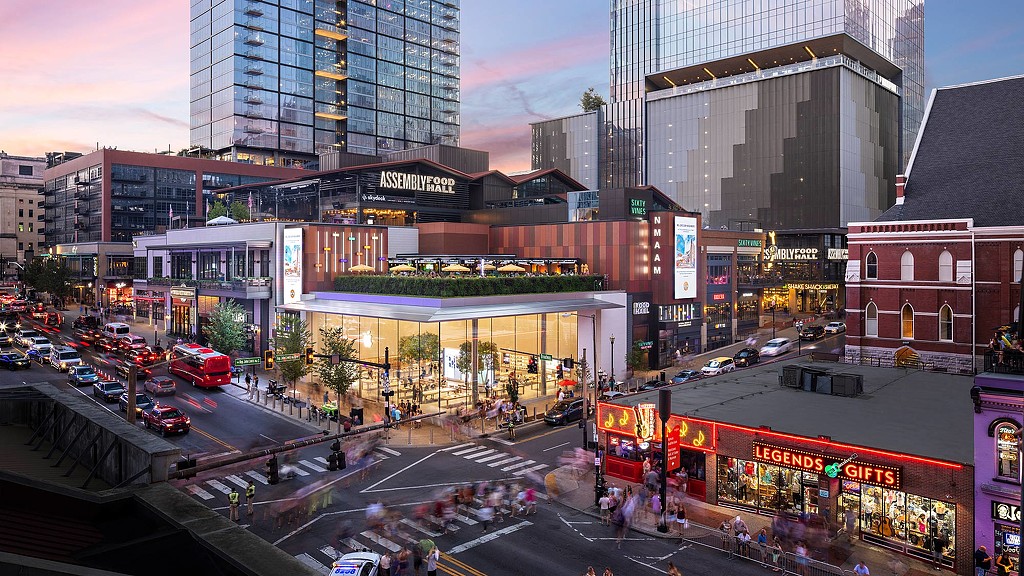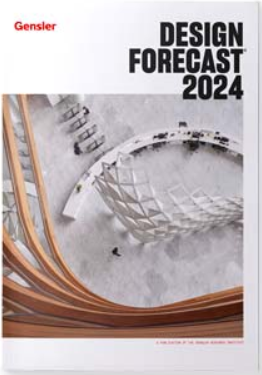Gensler’s Design Forecast 2024 identifies 8 trends and strategies shaping the built environment and redefining cities that are nimble


Global architecture and design firm Gensler has released its annual Design Forecast report, which presents strategic advice, research, and projects from across Gensler’s 33 practice areas to help the firm’s clients and industry partners navigate the most pressing issues we face today, through leveraging the power of design.
This year’s Design Forecast is all about the power of design and its ability to develop solutions for the world’s complex challenges. We have an enormous opportunity to address the crises we face — from economic pressures and geopolitical volatility to climate change — but only if we’re willing to use our innate creativity and problem-solving abilities to think bigger and lead with bold new initiatives. Design truly is a universal language that can build common ground and make a positive impact.
Diane Hoskins and Andy Cohen, Gensler Co-CEOs
The report reveals key trends that are shaping the building industry, including AI’s immense potential to accelerate ideas and innovations in design, how we can transform our cities to better suit the needs of its inhabitants and be nimbler to change, as well as the non-negotiable necessity of sustainable building practices, the allure of the 20-minute city, and more. The firm has identified “Eight Trends Shaping Design in 2024” that highlight the most important signals and key opportunities in the building industry today:
- Experience multipliers pay premium dividends: Now more than ever before, people are craving phenomenal, visceral, and connected experiences in every part of their lives, whether that’s in a workplace that feels like a clubhouse or a sports stadium that anchors a vibrant, 24/7 mixed-use entertainment district. In 2024, real estate leaders will find success reclaiming human connection with “experience multipliers”: immersive designs that drive loyalty, boost sales, and improve vibrancy with a shared sense of inspiration and belonging.
- Conversions resurrect stranded assets: Office-to-residential conversions and other creative repositioning will represent a new value proposition for the building industry: transforming under-performing office buildings into housing and addressing a vital need for new residential options in cities. As organizations seek out fully amenitized, recently built projects, this “flight to quality” is stranding under-capitalized and unoccupied B and C buildings in urban cores around the world. In 2024, expect more government municipalities to incentivize adaptive reuse strategies and conversions whose renovations breathe new life into cities and offer vital infrastructure enhancements — and do it in an environmentally responsible way.
- Sustainable design becomes a non-negotiable: As intense weather and climate change assail the built environment, sustainable design shifts from an option to an obligation. By 2024, the building and real estate industries around the world will recognize the value of environmentally conscious design and its ability to mitigate risk. Higher standards for products and materials, the adaptive reuse of existing buildings, net zero energy strategies, and regenerative design principles will define our sustainable future.
- The future of the workplace as a compelling destination: As more organizations understand that the workplace landscape has permanently changed, the focus will shift less on how many people come into the office and more on what the future of work looks like to support their people’s needs. In 2024, organizations will continue to plan for in-person experiences in spaces that are agile and flexible enough to evolve with the changing demands of the workforce and useful enough to earn people’s commutes.
- Mixed-use lifestyle districts bring cities back to life: Monolithic, office-focused downtowns have become a thing of the past, replaced by vibrant, experience-driven social districts that are focused on a mixed-use collection of retail, entertainment, sports, housing, and other lifestyle-anchored developments. By prioritizing safety and mobility in these new multimodal districts, cities can attract residents and tourists and bring Covid-impacted neighborhoods back to life.
- Designers harness AI to accelerate ideas and innovation: In 2024, artificial intelligence (AI) will open the door to new ideas, new talent, and new creative opportunities. Far from replacing designers, AI will become a collaboration tool that will help designers redefine the design and innovation process with new insights, rapid iterations, and more immediate response times. Buildings and spaces designed with the help of AI will be more sustainable, better performing, and more responsive to individual needs and preferences.
- Focus shifts to ageless communities and design for a lifetime: Over the past 50 years, the average life expectancy for people around the world has expanded by more than 10 years, a figure that will only grow in the coming decades. With the global trend toward increased longevity, 2024 will mark a shift toward designing age-inclusive communities. Demand for flexible and multigenerational communities that foster accessibility and affordability will have universal appeal.
- 20-minute cities become archetypes of equity and accessibility: As city leaders seek out design strategies to help them enhance their central business districts to be more lifestyle-oriented, the idea of the 20-minute city remains increasingly attractive. These vibrant, walkable neighborhoods, where all essentials lie within a 20-minute reach — including restaurants, retail spaces, medical facilities, educational places, and much-needed residential alternatives — are redefining city living. This trend underscores the importance of creating accessible, inclusive urban spaces that promote equity, connectivity, and community.
The 2024 Design Forecast also reflects Gensler’s own transformation in the past year, as the firm has added four new practice areas, bringing the total to 33, and three new offices, for a total of 53 in 16 countries. The new practice areas include Build to Suit & Headquarters; Entertainment; Industrial & Logistics; and Mobility & Transportation.

